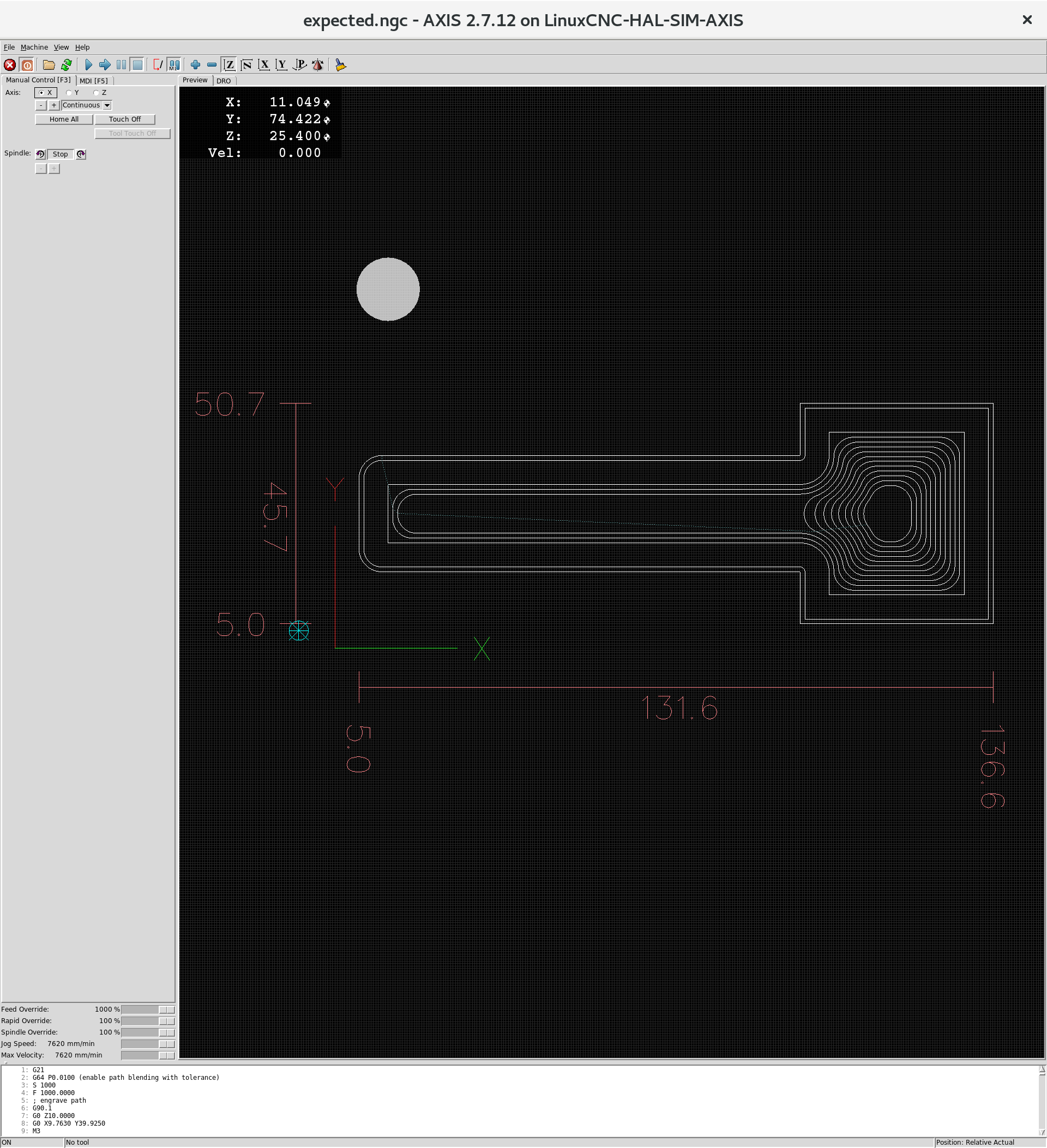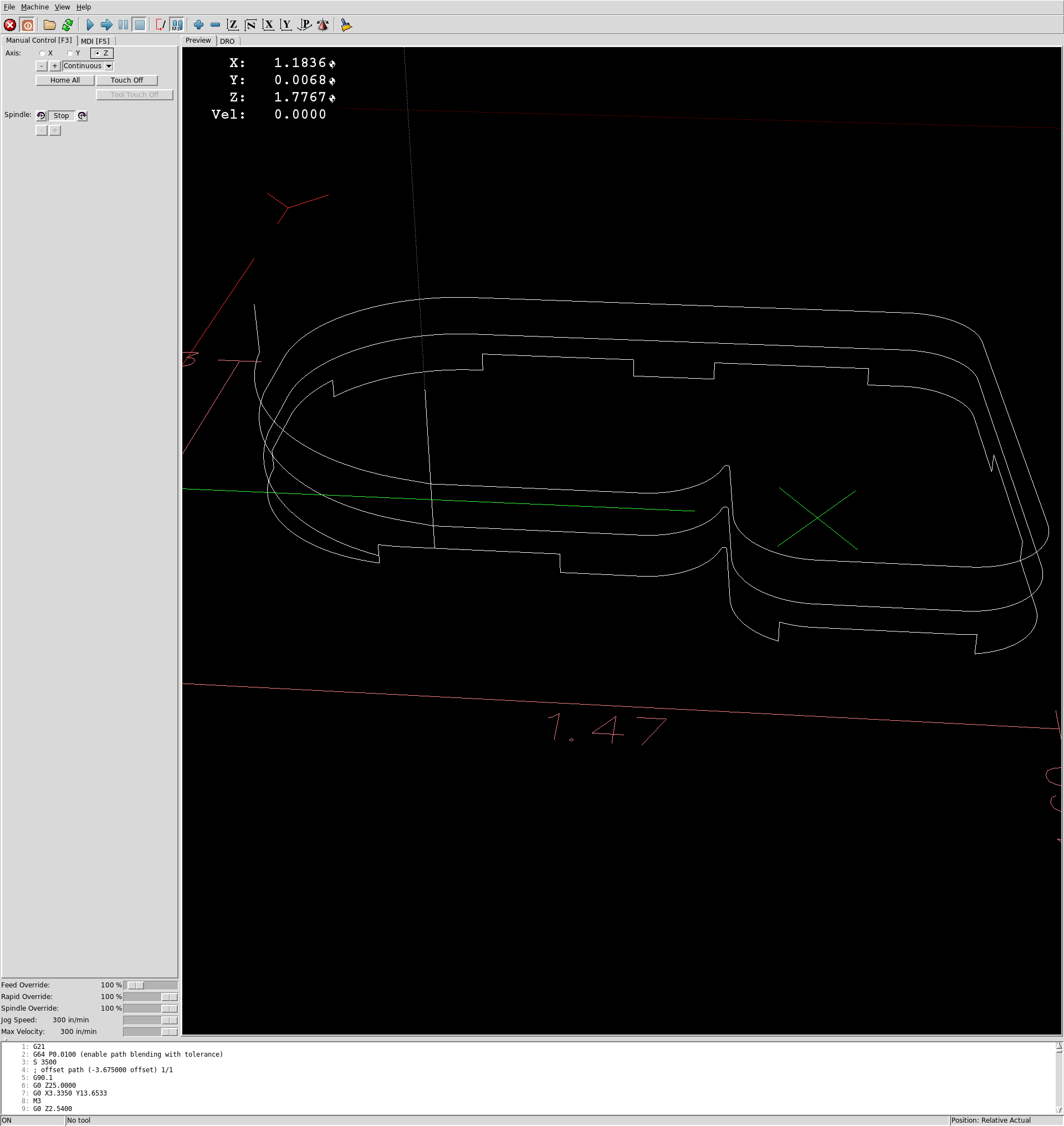svg2gcode reads an SVG file and produces g-code machining operations from the paths in it.
Supported operations are:
-
engraving (follow the path from the SVG)
-
offset (follow a path offset inwards or outwards from the SVG path)
-
pocket (clear the interior of the path from the SVG)
-
drill (in the center of circular paths)
Features:
-
ramp or plunge entry moves
-
optionally add work-holding tabs
-
primitive nesting via duplication on an XY grid
Clone the svg2gcode repo:
git clone https://github.com/SebKuzminsky/svg2gcode.git
git submodule init
git submodule update
Install dependencies:
sudo apt-get install python3 python3-svgwrite python3-numpy python3-jsonschema asciidoc docbook-xml docbook-xsl xsltproc make
The test suite runs the LinuxCNC Standalone Interpreter to validate
the emitted g-code, this is available in the linuxcnc-uspace package
from the linuxcnc.org deb archive.
Add the GPG key that validates the linuxcnc.org deb archive:
sudo apt-key adv --keyserver hkp://keys.gnupg.net --recv-key 3cb9fd148f374fef
Add the apt source for the linuxcnc.org deb archive:
deb http://linuxcnc.org stretch base 2.7-uspace
Install the linuxcnc-uspace package:
sudo apt-get install linuxcnc-uspace
Build the manpage:
make
Run the test suite:
cd test; ./runtests
This repo also contains a python module named gcoder that writes g-code.
It is intended to be called from a program that has an idea of some cuts it wants to make. Gcoder functions write g-code to an output file. Some Gcoder functions correspond directly to specific g-codes, and some to more complex operations consisting of longer sequences of g-codes.


